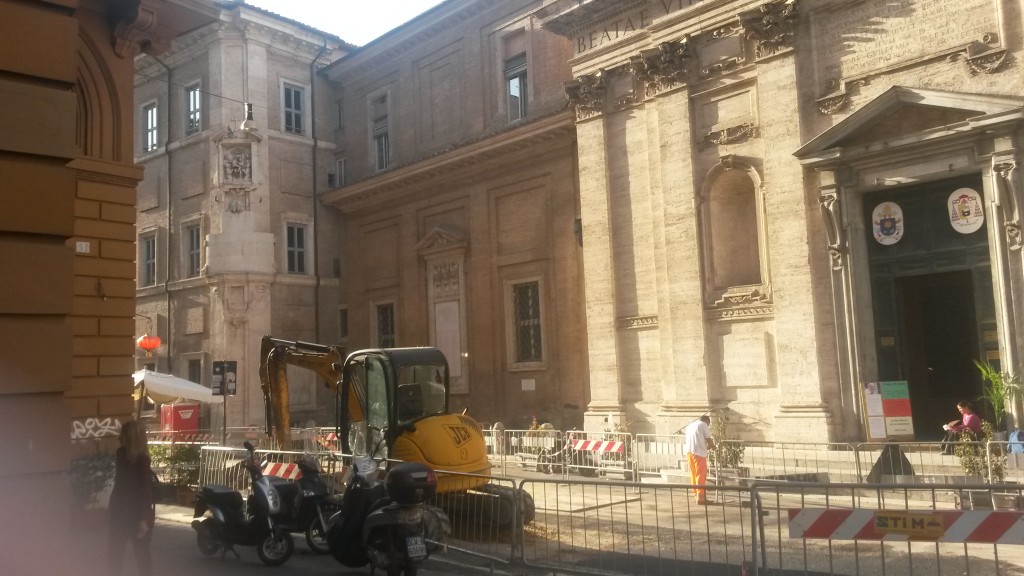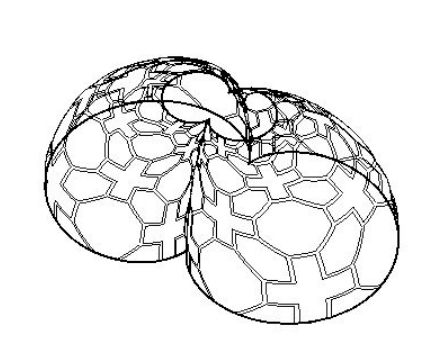Corso opzionale Lauree Magistrali, docenti Corrado Falcolini e Laura Tedeschini Lalli
orario lezioni a.a. 2015-16: mercoledì ore 14-16 aula Morandi, venerdì ore 11-13 aula Sabbatini
AVVISO AGLI STUDENTI: durante questo primo mese abbiamo radunato alcune parole-chiave e concetti-chiave comuni agli articoli di ricerca che avete scelto. Faremo lezione su questo.
C’è anche altro materale disponibile, ad esempio:
Costruzione dell’icosaedro con rettangolo aurei, costuzione del rettangolo aureo,
Programma del corso:
prima parte del corso (un mese): reading course +seminar course.
ogni studente legge un articolo di ricerca, scelto tra alcuni pubblicati su Nexus Network Journal oppure sugli atti della conferenza annuale Advances in Architectural Geometry. Seminario individuale, ogni studente racconta a tutti gli altri il contenuto ed i metodi dell’articolo scelto.
rassegna dei vari software usati finora, di quali siano dedicati, e quali integrabili.
lezioni frontali: approfondimento del concetto di metrica e di curvatura, già affrontato nel corso precedente; integrazione in aspetti progettuali.
seconda parte del corso: integrazione in progetto personale.
qualche riferimento.
un buon libro: Pottmann, Architectural Geometry
il libro è da integrare su alcuni temi, perché a volte lascia un pò l’amaro in bocca agli studenti autodidatti, incuriosendoli , ma non esponendo né le argomentazioni, né le applicazioni. Siamo qua per questo. In particolare, il capitolo sulla curvatura è chiaro.
Elenco degli articoli scelti finora per la prima parte del corso:
1) M. Reynolds From Pentagon to Eptagon: a Discovery on the Generation of the regular Eptagon from the Equilateral Triangle and the Pentagon Volume 3 (2), pp 139-146 (2001) Abstract:Geometer Marcus the Marinite presents a construction for the heptagon that is within an incredibly small percent deviation from the ideal. The relationship between the incircle and excircle of the regular pentagon is the key to this construction, and their ratio is 2 : ϕ. In other words, the golden section plays the critical role in the establishment of this extremely closeto-ideal heptagon construction. Keywords: vesica piscis architecture and mathematics constructing regular polygons with compass and straightedge plane geometry golden secion regular heptagon
4) M. Reynolds A Comparative Geometric Anlysis of the Height and Basis of the Great Pyramid of Khufu and the Pyramid of the Sun at Teotihuacan Nexus N Journ Volume 1 (1-2), pp23-42 (1999) Abstract: Mark Reynolds examines the Pyramid of the Sun at Teotihuacan and the Great Pyramid of Khufu from the point of view of geometry, uncovering similarities between them and their relationships to the Golden Section and π.
5) C. Bovil The Doric Order as Fractal Nexus N Journ Volume 10 (2), pp283-290 (2008) Abstract: Owen Jones in The Grammar of Ornament clearly states that ornament comes from a deep observation of nature. He emphasizes the importance of the harmony of the parts and the subordination of one part to another. This subordination and harmony between the parts is what fractal geometry explores as self-similarity and self-affinity. An iterated function system (IFS) is a digital method of producing fractals. An IFS in the shape of columns holding up a lintel produced an attractor displaying fluted columns with capitals and an entablature with the proper number and spacing of triglyphs and mutules. Thus, fractal geometry, through the use of iterated function systems, provides a new insight into the intention of Doric ornament design.
tra i vari temi possibili:
Paesaggio sonoro urbano: rilievo, problemi, visualizzazioni
tutorial del software Mathematica con esempi 08112014


